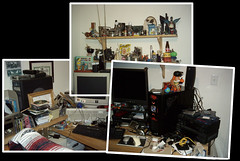My Creative Workspace
Interesting to see a big difference in the workspace (aka cubicle) that I work in at work vs. the workspace that I work/play in at home... a pseudo studio as much as one can be in a 13x13 second bedroom. Functionally it's utilitarian space... space utilized for the sole purpose of storing crap - paperwork, files, in progress, magazines, etc. It has a lot more freedom in the corner space. Various speakers, headphones and PDAs; because, like a good pair of shoes, I can never seem to find the right "fit"... There is just enough space enough to do work on the computers, do paperwork, draw and take things apart.
Computers with large, you can never have enough, monitors - Flat panel NEC and an old Trinitron from undergrad - friggin' workhorse that thing is. The first "real" mac, I still own (PowerPC 7100/AV), sits as a monitor stand - the 'very first' was a IIGS I harassed my parents into getting which got lost in shipping on the way to Germany back in the day... then it was more about getting the spare parts needed to put my own PC machines together.
Multiple VCRs and PVRs to capture video feed of stuff that I will probably never get to edit but will more then likely watch and file away... distractions to some but again, it's background noise. "Distractions" and clutter are scattered around most used as inspirational outlets. Piles of paperwork, collections bound for ebay, electronic projects half completed, half started - depending on how you look at it. There are examples of good design and bad design... items of curiosity, planned obselescence (sp?). There is just enough space with creature comforts... hidden spaces for hidden things, lost things, broken things, parts to things that may or may not be in a box somewhere... neat things, cool things, wow, why didn't I think of that things...
John McIlwee, Director of University Theatre
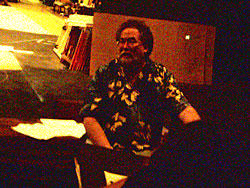
When asked why he was so creative, John McIlwee commented that he hadn't given it much thought. He never really questioned the origins of inspirational creativity for himself. Although he feels that one is creative by birth, that it is intrinsic in nature to be instinctively creative, he reflected that he wasn't sure where it came from because his "parents had talents… just not much". This response really reminded me about the old argument of “nature vs. nurture”. Attributing his initial foray into the arts to a close mentor, John asserts the principle that Creativity is not a choice but more often is a lifestyle; he elaborated that his talent and creativity were refined through the development of an environment that supported and "nurtured the creative spirit". I found that this “push and pull” with the inner nature of the individual and the external influence from the environment could be balanced by utilizing some basic personality profiles and tests. By understanding how you learn and internally process the world as well as how you react and how others perceive, you can gain insight into your strengths and weaknesses when it comes to interpreting something new or approaching others when explaining something.
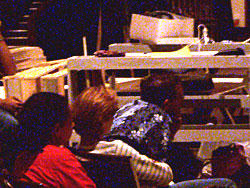
I find it fascinating that somehow with only a great interest in art, where no art or artistic channels were available, he managed to surround his life and work with creative outlets that kept his attention, challenged his skills and refined his personal outlook. I can relate to the regiment of learning the vocabulary and the technical proficiency of the craft as it becomes critical to the development of a mature creative path. I believe that it is through this maturity and understanding where one can be able to effectively communicate one's ideas and vision as clear as possible to those around you. Taking what is common to the field of endeavor yet building upon those foundations to be able to translate a set of requirement or to better describe your ideas using language from both fields of practice.
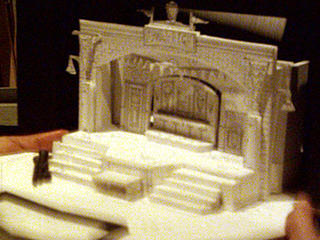
In line with Patrick Fitzgerald's philosophy, John emphasized that creativity isn't derived through analysis alone but is developed through routine and practice. The development of many iterations of design, without stopping to question each individual idea, is required to fully explore the nuances of a particular task or project. Although this task at first seems daunting I find it is helpful to first change something minor – color, shape, size, texture and then incrementally build up over time then by starting over with something completely different. Once you get into the routine of modifying a single design and cranking out ideas over and over you get into a focused frenzy, boxing out portions of the design, scribbling over ideas that were created or combining two separate ideas - where alone they would look simple but once merged together they look refined. Only through this practice can one explore both the mundane and the elaborate while displaying the myriad of choices available without settling for the norm. Once “complete” you have at your disposal a good assortment to choose from as well as an archive of the design process for which someone else can utilize or see where the idea evolved or was deconstructed down to its simplest form.
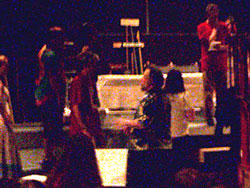
An idealist and perfectionist, John McIlwee stresses that he is dissatisfied with compromise. Understanding that no matter what the outcome is, it is the he alone that will get some form of blame, criticism or ridicule for the project as a whole. Therefore it is of importance, as the creative artist, to please oneself first while following through with strength and character – being both honest and true to the craft; telling the story from the heart and blocking anything else out in order to focus or lock into the vision. He recommends that you not be hindered by the rules of others so that you may envision, enact, and espouse in order to get your vision out.
Everyone is born creative; everyone is given a box of crayons in kindergarten...
Brad Kayal has a great write up from this
"How To Be Creative" List by Tom McMahon.
"
Everyone is born creative; everyone is given a box of crayons in kindergarten... Then when you hit puberty they take the crayons away and replace them with books on algebra etc. Being suddenly hit years later with the creative bug is just a wee voice telling you, "I¹d like my crayons back, please." So you've got the itch to do something. Write a screenplay, start a painting, write a book, turn your recipe for fudge brownies into a proper business, whatever. You don't know where the itch came from, it's almost like it just arrived on your doorstep, uninvited. Until now you were quite happy holding down a real job, being a regular person...
Until now.
You don't know if you're any good or not, but you'd think you could be. And the idea terrifies you. The problem is, even if you are good, you know nothing about this kind of business. You don't know any publishers or agents or all these fancy-shmancy kind of folk. You have a friend who's got a cousin in California who's into this kind of stuff, but you haven't talked to your friend for over two years...
Besides, if you write a book, what if you can't find a publisher? If you write a screenplay, what if you can't find a producer? And what if the producer turns out to be a crook? You've always worked hard your whole life, you'll be damned if you'll put all that effort into something if there ain't no pot of gold at the end of this dumb-ass rainbow...
Heh. That's not your wee voice asking for the crayons back. That's your outer voice, your adult voice, your boring & tedious voice trying to find a way to get the wee crayon voice to shut the hell up. Your wee voice doesn't want you to sell something. Your wee voice wants you to make something. There's a big difference. Your wee voice doesn't give a damn about publishers or Hollywood producers.
Go ahead and make something. Make something really special. Make something amazing that will really blow the mind of anybody who sees it. If you try to make something just to fit your uninformed view of some hypothetical market, you will fail. If you make something special and powerful and honest and true, you will succeed.
The wee voice didn't show up because it decided you need more money or you need to hang out with movie stars. Your wee voice came back because your soul somehow depends on it. There's something you haven't said, something you haven't done, some light that needs to be switched on, and it needs to be taken care of. Now. So you have to listen to the wee voice or it will die... taking a big chunk of you along with it.
They're only crayons. You didn't fear them in kindergarten, why fear them now?" -
Brad Kayal
“DOWNTOWN APPETITE FOR ART”
As part of the 100th birthday celebration of the Glenwood-Brooklyn area as Raleigh’s first planned neighborhood, the Historic Glenwood-Brooklyn Neighborhood Association (HGBNA) will be hosting “
Downtown Appetite for Art” on Friday, Oct. 14 from 8 p.m. to 11 p.m. at
Exploris Museum. The event – cosponsored by Mix 101.5 (WRAL-FM) , Sullivan’s Steakhouse and DowntownRaleigh.com -- will be a charity fundraiser for the Boys and Girls Clubs.
• An art auction of valuable works, including contemporary and traditional paintings, sculptures, lighted art designs, pottery, and mixed media art;
• A silent auction of additional items donated by artists, including wine and food gift baskets, sports memorabilia, gift certificates, sports memorabilia, professional services and jewelry;
• A wine tasting provided by local businesses, with food courtesy of Sullivan’s Steakhouse and other eating establishments; and,
• Musical entertainment by The Connells. There also will be live jazz music.
• Tickets to “Downtown Appetite for Art” cost $35 if purchased by Oct. 3. They can be obtained by visiting HGBNA’s website at
www.glenwoodbrooklyn.com. After Oct. 3, tickets are $40 and may be purchased on the website and will be available at the door on the day of the event. A ticket purchase and all other purchases at the event will be considered as tax-deductible contributions to the Boys and Girls Clubs under North Carolina law, according to event organizers. Also, each buyer of a “Downtown Appetite for Art” ticket will receive a free ticket to the Glenwood-Brooklyn Tour of Historic Homes on Dec. 3.
For more information about “
Downtown Appetite for Art,” contact Rhett Fussell of the
Historic Glenwood-Brooklyn Neighborhood Association at 412-5476 or email appetiteforart@nc.rr.com.
How To Be Creative List
Hugh MacLeod is a marketer turned illustrator turned tailor with his trademark business card doodles jumps into the discussion of not-so-everyday life and bussiness in general. He has a long version of
"How To Be Creative" peppered with his illustrations.
(The short, short list)1. Ignore everybody.
2. The idea doesn't have to be big. It just has to change the world.
3. Put the hours in.
4. If your biz plan depends on you suddenly being "discovered" by some big shot, your plan will probably fail.
5. You are responsible for your own experience.
6. Everyone is born creative; everyone is given a box of crayons in kindergarten.
7. Keep your day job.
8. Companies that squelch creativity can no longer compete with companies that champion creativity.
9. Everybody has their own private Mount Everest they were put on this earth to climb.
10. The more talented somebody is, the less they need the props.
Read more here @ The Gaping Void.
